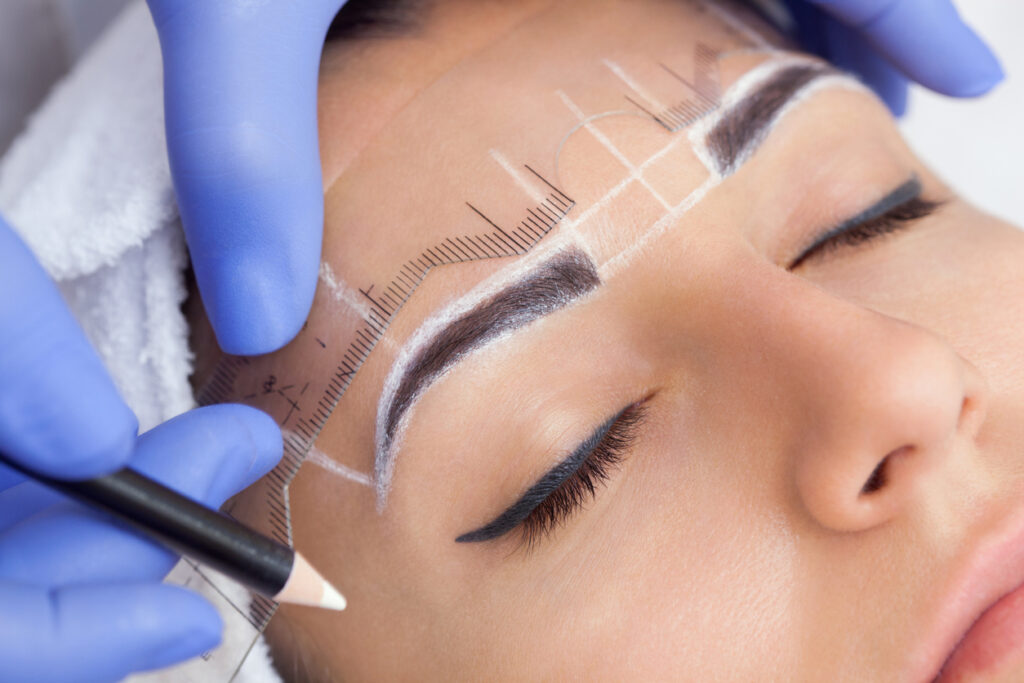Permanent makeup can help restore confidence in people with certain skin and hair conditions, according to a new article in the Journal of the American Academy of Dermatology.
The most popular permanent makeup procedures include eyeliner, lip liner, and eyebrow coloring, but permanent makeup can also be used to camouflage surgical scars, birthmarks, and alopecia. Nipple-areola reconstruction can be performed using permanent makeup after breast cancer or breast reduction surgery.
“We often think about permanent makeup being used to enhance a person’s lips or eyebrows,” says study authorWalter Liszewski, MD, FAAD, Assistant Professor of Dermatology and Preventative Medicine at Northwestern Feinberg School of Medicine in Chicago, IL, in a news release. “However, for people with conditions like vitiligo or alopecia, permanent makeup can be transformative. It can be used as a tool to restore confidence and empowers these patients to find a sense of renewed self-assurance with cosmetic results that current medications can’t deliver.”
Permanent makeup may also prove particularly useful for individuals with arthritis, tremors, or other medical conditions that make it difficult to apply conventional makeup.
“Before undergoing the procedure, it is important to consult with a board-certified dermatologist to discuss the types of results you wish to achieve and whether there may be potential complications due to skin allergens,” says Dr. Liszewski.
It is important to choose the right professional to stay as safe as possible and understand realistic results.
“What most people don’t realize is that some board-certified dermatologists offer permanent makeup,” says Dr. Liszewski. “If your dermatologist does not offer this service, we often know of permanent makeup artists who do good work and are able to recommend them to patients.”
Permanent Makeup: Complications
Researching your options and consulting with a board-certified dermatologist prior to any cosmetic tattooing could potentially lessen your risk of complication.
“The most common complication of permanent makeup is being unhappy with the results of the procedure, regretting the procedure due to unrealistic expectations of what it might look like, and the incorrect application of ink to the skin,” says Dr. Liszewski. “Among my patients, I have seen an increase in complications relating to infectious and allergic reactions as the demand for procedures have also increased during the COVID-19 pandemic.”
Those who are considering or have undergone other cosmetic procedures such as fillers or botulinum toxin injections should be aware that these cosmetic procedures can distort the appearance of permanent makeup. Other potential complications include bacterial and fungal infections, blood-borne infectious diseases, and allergic reactions to tattoo ink. In instances when the procedures have been performed in a non-sterile environment, there have been reports of syphilis, hepatitis B, and other infectious diseases.
During the tattooing process, there is also the risk for transmission of other infectious diseases, such as HIV and hepatitis C. Additionally, the ink used in eyeliner tattoos can be affected when undergoing an MRI, which may result in burning, tingling, or swelling.
Some complications may be more common if proper hygiene and aftercare are not followed.
Permanent Makeup: Regulatory Update
“Since there are no uniform training or regulatory guidelines for permanent makeup artists in the United States and regulations can vary at state and local levels, it is important for people to do their research before considering the procedure,” adds Dr. Liszewski. “Some states require coursework and apprenticeships while others do not, with formal training courses being as short as four hours and apprenticeships lasting as long as 24 months.”
Seven states (Arizona, California, Utah, New York, Nevada, Idaho, and Wyoming) do not have state regulations for permanent makeup or cosmetic tattooing and defer to local county and city health department regulations. In South Carolina, permanent makeup is regulated by the state’s medical board. Health and infection control regulations also vary, with five states not requiring permanent makeup artists to receive training in hygiene and blood-borne pathogens (Idaho, North Carolina, North Dakota, West Virginia, and Wisconsin).
Because there are no uniformed federal regulations and requirements, the AAD recommends that people consider the following when selecting a permanent makeup professional:
Tattoo artists, both traditional and cosmetic, should receive adequate training to pass written and practical examinations on sanitation, sterilization, the anatomy of the skin, common skin conditions and infections, universal body fluid precautions, proper medical waste disposal, and wound care.
Tattoo artists should record the color, manufacturer, and lot number of pigments used in each tattoo. Adverse reactions should be reported to the local health department and the Food and Drug Administration.
Tattoo facilities should be subject to initial and periodic inspections by the state health agency and be required to obtain an operating permit.
Tattoo artists must use medical-grade protection gloves, employ appropriate instrument sterilization techniques and practice universal precautions against blood-borne infections as recommended by the Centers for Disease Control and Prevention.
Tattoo artists must provide those receiving tattoos with skin care instructions including the signs and symptoms of complications and where to go for medical care.
Tattoo personnel should be required to adhere to the Occupational Safety and Health Administration (OSHA) regulations, and particularly those related to blood-borne pathogens.
“The guidance I offer for those who choose to get permanent makeup is to always wash their hands before they touch a healing tattoo; only use fragrance-free products; and if signs or symptoms of an infection occur, they should contact the artist and a board-certified dermatologist,” says Dr. Liszewski.


